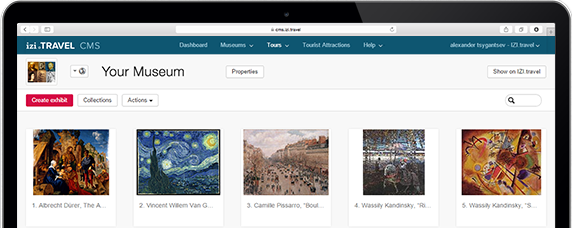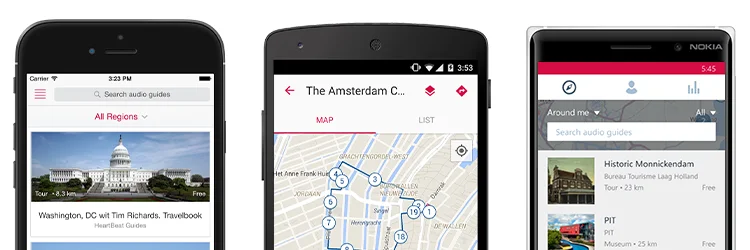Audio tour
Audio tour Once upon a time there was Rusellae
2 sights
- Sommario Auditour
-
Sommario Auditour
Update Required To play the media you will need to either update your browser to a recent version or update your Flash plugin.Once upon a time, not far from the plain where Grosseto stands today, there was a range of hills covered in forests and crossed by crystalline rivers. A vast lagoon, called the Prile, which communicated with the sea, washed the slopes of these high grounds.
The first people to frequent these hills were prehistoric hunters. They lived by hunting, fishing and foraging for berries, and inhabited the natural caverns that are commonly found around here. The discovery of tools made of stone, wood and bone, used to hunt and to work on the animals’ remains, demonstrate the presence of prehistoric man in the area.
With the passing of time, more stable communities began to inhabit the hills and so small villages of huts sprung up. Then, in the seventh century BC, in full Etruscan times, Rusellae made its appearance: it was a proper urban center with houses built of stone and raw bricks, which about a century later was provided with a set of imposing defensive walls surrounding the hills on which the town was located.
In the Etruscan era, the town enjoyed a period wealth and prosperity thanks not only to the exploitation of farming and mining resources, but also to overland and maritime commercial exchanges with other Italic peoples and with populations from far off lands such as Sardinia, Greece, Asia Minor and the coasts of Northern Africa. Ports controlled by Rusellae were certainly present on Lake Prile and on the Ombrone River, a busy commercial route towards inland Etruria.
In the fourth century, the Romans built the via Aurelia and began intensifying their presence in the area. Initially, relations with the people of Rusellae were peaceful, but these deteriorated with the passing of time. Eventually the Romans and Etruscans came into conflict and battled against each other, and this lead to the Roman conquest of Rusellae in 294 BC.
Destroyed by the Romans, in the following years the economy picked up and construction of new buildings began in the Etruscan settlement until, for its involvement in the social wars at the beginning of the first century AD, it obtained Roman citizenship. Not long after that, Sulla’s wars lead to more fire and destruction, but towards the end of that century, the town was finally able to enjoy a renewed and long-lasting period of peace and prosperity with intense moments of architectural activities, particularly during the eras of Hadrian and the Julio-Claudian dynasty.
Rusellae’s vitality and splendor diminished in the course of the fourth century AD, during the Christian period. In the sixth century a church was built over the ruins of the thermal baths of Hadrian, which had by then fallen into disrepair, and thus Rusellae became a bishopric.
In the middle of the sixth century the Langobards descended into Italy, occupying the little town of Rusellae early in the seventh century. The Franks arrived during the eighth century and promoted the expansion of the powerful Aldobrandini family in the entire Maremma region. The date that permanently marks the end of Rusellae is 1138, the year when the bishopric was moved to Grosseto.
Ministry of Cultural Heritage and Activities and of Tourism
Soprintendenza Archeologia della Toscana
Texts and sketches of hypothetical reconstructions by Fiora Giovino
3D reconstructions of the Basilica by Benedetta Cappellini
Photos of the walls, of the Basilica of the Bassi, the statua loricata, the amphitheater and of the thermal baths from the era of Hadrian curated by Paolo Nannini
Supervision Gabriella Poggesi
We would like to thank all the staff of the Rusellae archaeological site
Production and contents management PRISMA Associazione Culturale
Translation: Stephanie G. Williams, Nicola Amico
Voice: Carolina Gamini - Studio Pippolaticomusic di Luca Bechelli - 1 The necropolises
- 2 The thermal baths of Betizio Perpetuo Arzygio
- 3 The paved road
- 4 The thermal baths of Hadrian and the paleo-Christian church
- 5 Roman-period shops
- 6 Etruscan buildings in the area surrounding the forum
- 7 Area of the Forum
- 8 The Domus of the Mosaics
- 9 The Roman-period cistern located on the southern hill
- 10 Etruscan quarter on the southern side of the hill
- 11 The amphitheater and the Hellenistic house
- 12 The “impluvium” house
-
Sommario Auditour
Update Required To play the media you will need to either update your browser to a recent version or update your Flash plugin.Once upon a time, not far from the plain where Grosseto stands today, there was a range of hills covered in forests and crossed by crystalline rivers. A vast lagoon, called the Prile, which communicated with the sea, washed the slopes of these high grounds.
The first people to frequent these hills were prehistoric hunters. They lived by hunting, fishing and foraging for berries, and inhabited the natural caverns that are commonly found around here. The discovery of tools made of stone, wood and bone, used to hunt and to work on the animals’ remains, demonstrate the presence of prehistoric man in the area.
With the passing of time, more stable communities began to inhabit the hills and so small villages of huts sprung up. Then, in the seventh century BC, in full Etruscan times, Rusellae made its appearance: it was a proper urban center with houses built of stone and raw bricks, which about a century later was provided with a set of imposing defensive walls surrounding the hills on which the town was located.
In the Etruscan era, the town enjoyed a period wealth and prosperity thanks not only to the exploitation of farming and mining resources, but also to overland and maritime commercial exchanges with other Italic peoples and with populations from far off lands such as Sardinia, Greece, Asia Minor and the coasts of Northern Africa. Ports controlled by Rusellae were certainly present on Lake Prile and on the Ombrone River, a busy commercial route towards inland Etruria.
In the fourth century, the Romans built the via Aurelia and began intensifying their presence in the area. Initially, relations with the people of Rusellae were peaceful, but these deteriorated with the passing of time. Eventually the Romans and Etruscans came into conflict and battled against each other, and this lead to the Roman conquest of Rusellae in 294 BC.
Destroyed by the Romans, in the following years the economy picked up and construction of new buildings began in the Etruscan settlement until, for its involvement in the social wars at the beginning of the first century AD, it obtained Roman citizenship. Not long after that, Sulla’s wars lead to more fire and destruction, but towards the end of that century, the town was finally able to enjoy a renewed and long-lasting period of peace and prosperity with intense moments of architectural activities, particularly during the eras of Hadrian and the Julio-Claudian dynasty.
Rusellae’s vitality and splendor diminished in the course of the fourth century AD, during the Christian period. In the sixth century a church was built over the ruins of the thermal baths of Hadrian, which had by then fallen into disrepair, and thus Rusellae became a bishopric.
In the middle of the sixth century the Langobards descended into Italy, occupying the little town of Rusellae early in the seventh century. The Franks arrived during the eighth century and promoted the expansion of the powerful Aldobrandini family in the entire Maremma region. The date that permanently marks the end of Rusellae is 1138, the year when the bishopric was moved to Grosseto.
Ministry of Cultural Heritage and Activities and of Tourism
Soprintendenza Archeologia della Toscana
Texts and sketches of hypothetical reconstructions by Fiora Giovino
3D reconstructions of the Basilica by Benedetta Cappellini
Photos of the walls, of the Basilica of the Bassi, the statua loricata, the amphitheater and of the thermal baths from the era of Hadrian curated by Paolo Nannini
Supervision Gabriella Poggesi
We would like to thank all the staff of the Rusellae archaeological site
Production and contents management PRISMA Associazione Culturale
Translation: Stephanie G. Williams, Nicola Amico
Voice: Carolina Gamini - Studio Pippolaticomusic di Luca Bechelli
Recensioni
1 recensione
Recensisci questo tour-
10-15-2021
bisogna creare un percorso obbligatorio altrimenti si rischia di non vedere tutto il patrimonio esistente
Scarica l'app gratuita izi.TRAVEL
Crea i tuoi audio tour!
L'uso del sistema e l'app di guida per dispositivi mobili sono gratuiti


